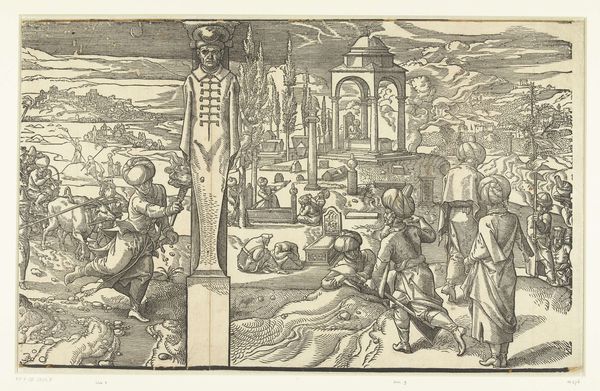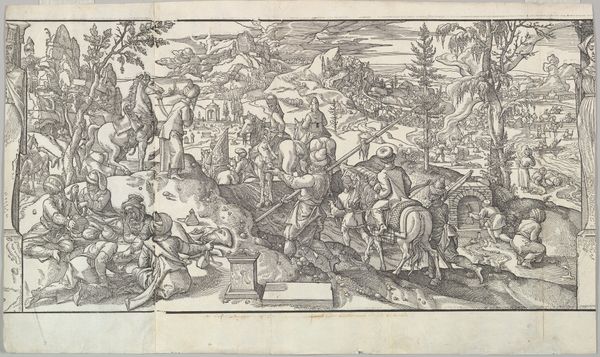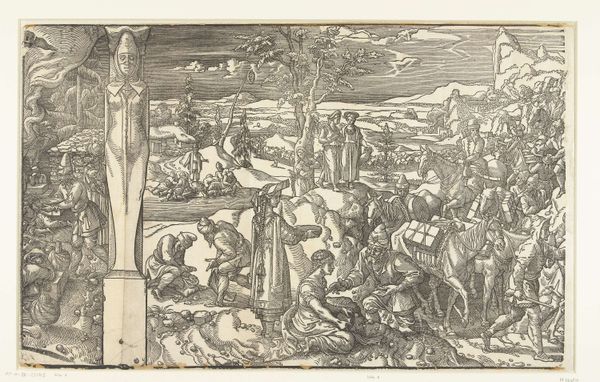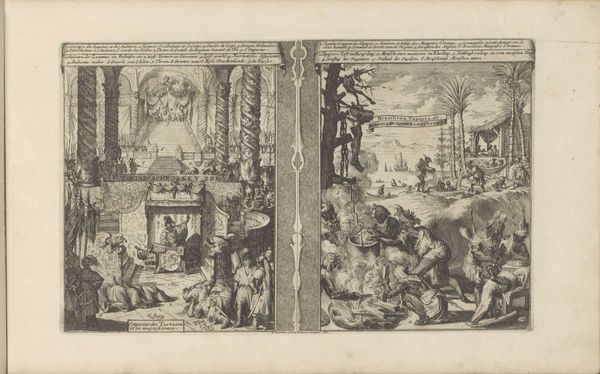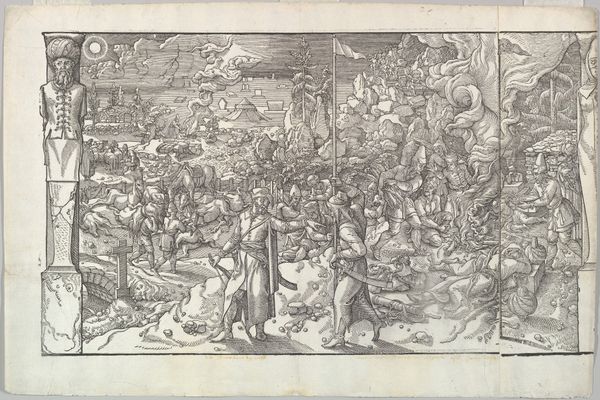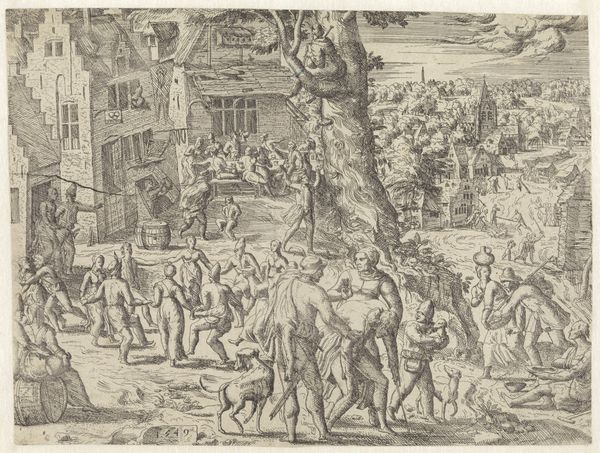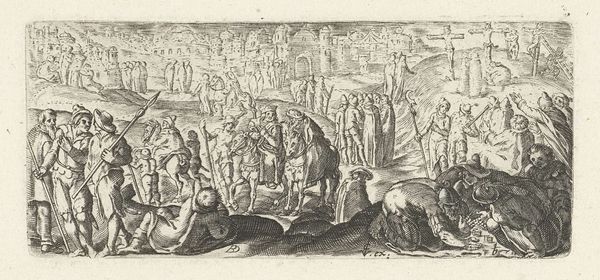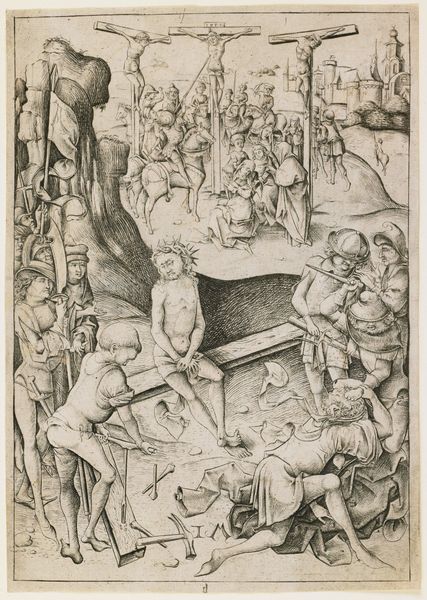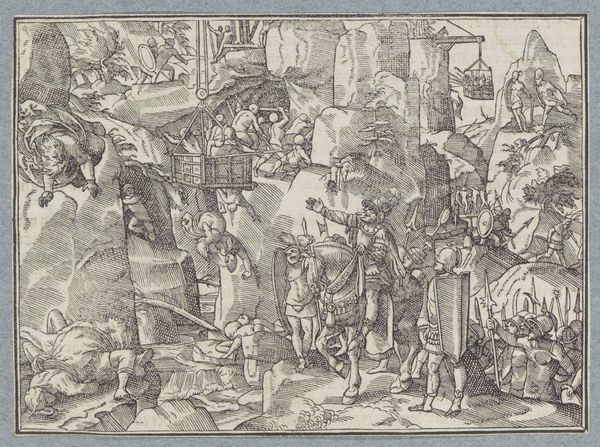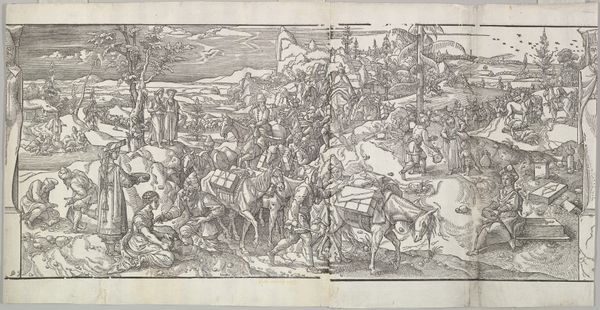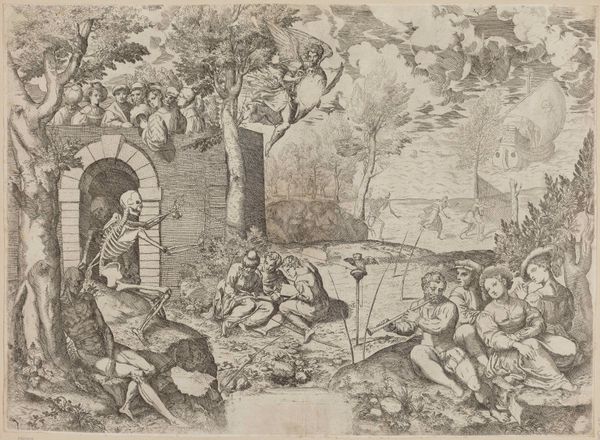
print, engraving
# print
#
landscape
#
figuration
#
history-painting
#
northern-renaissance
#
engraving
Dimensions: height 295 mm, width 466 mm
Copyright: Rijks Museum: Open Domain
Pieter Coecke van Aelst made this print of a caravan with etching and woodcut techniques. These methods involve careful, precise work. Focus on the lines that define the scene. With etching, the artist protects a metal plate with wax, scratches an image into the wax, and then bathes the plate in acid, which bites into the exposed lines. With woodcut, the artist carves away the negative space around the lines. Both techniques demand remarkable dexterity. Prints like this one allowed images and ideas to circulate widely in the 16th century. It is, in a way, a product of its own subject. The caravan suggests commerce, the movement of goods and people, and it is a reminder that the production and distribution of art was also a business. The artist was one of many laborers involved in this system. When we look at this print, we can appreciate both its artistic merit and its connection to the wider world of trade, travel, and cultural exchange. By considering the material and the making, we gain a deeper understanding of its significance.
Comments
No comments
Be the first to comment and join the conversation on the ultimate creative platform.
